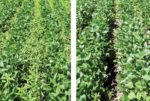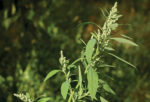Advertise Follow Us
Items Tagged with 'integrated weed management'
ARTICLES
Using ‘Many Little Hammers’ to Beat Back Resistant Waterhemp
New research from Iowa State University suggests cover crops, narrow rows and a smart herbicide program can help suppress herbicide-resistant weeds in soybeans by as much as 87%.
Read More
Focus on Preventing Weeds, Rather Than Killing Them
As herbicide resistance continues to complicate weed control, researcher Adam Davis says no-tillers should develop a more integrated approach to weed management.
Read More







